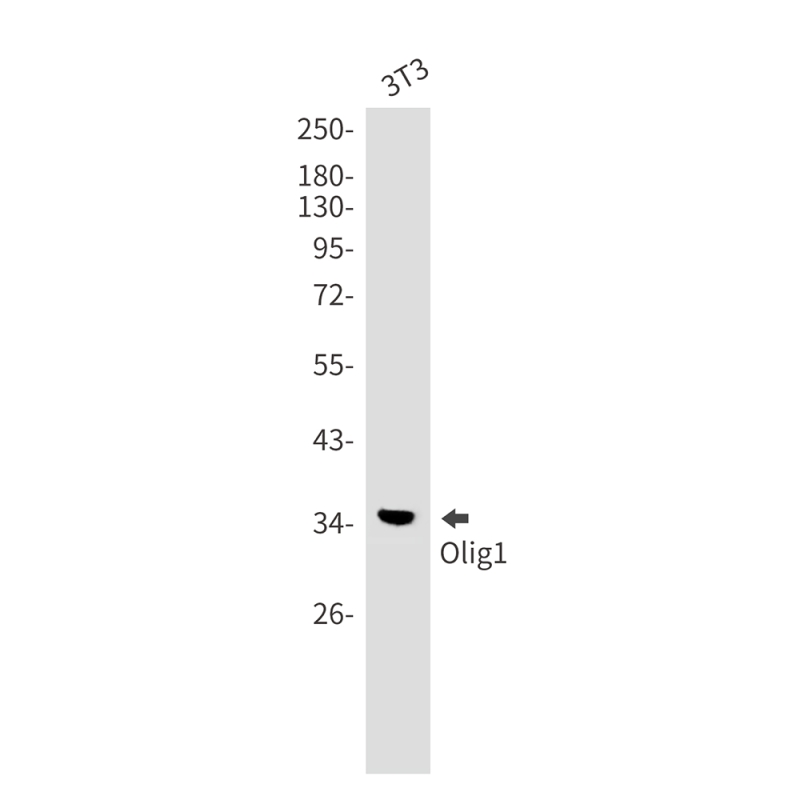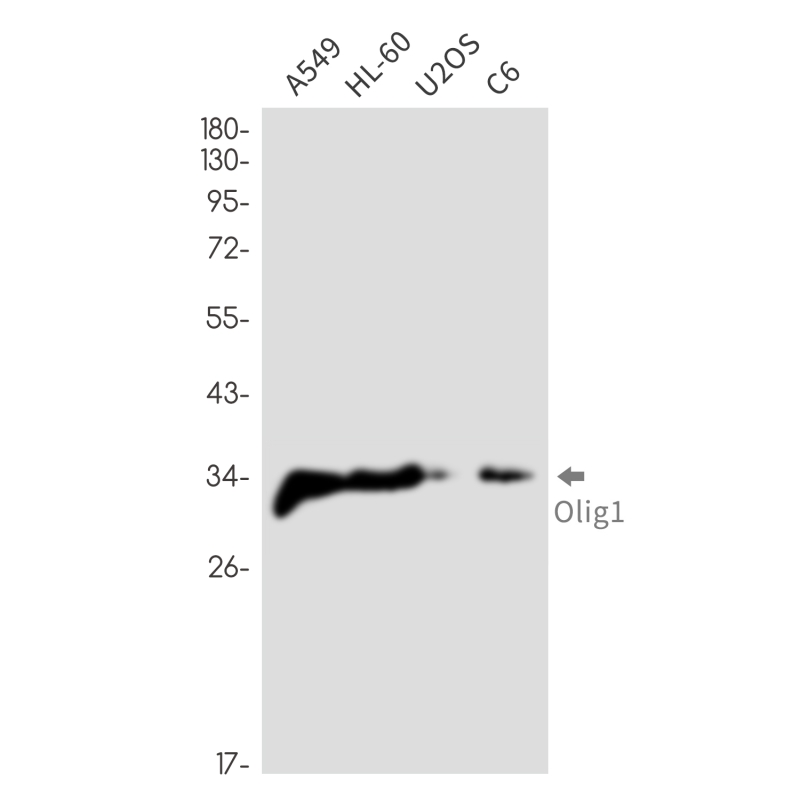

| WB | 1/500-1/1000 | Human,Mouse,Rat |
| IF | 咨询技术 | Human,Mouse,Rat |
| IHC | 咨询技术 | Human,Mouse,Rat |
| ICC | 技术咨询 | Human,Mouse,Rat |
| FCM | 咨询技术 | Human,Mouse,Rat |
| Elisa | 咨询技术 | Human,Mouse,Rat |
| Aliases | BHLH B6; BHLHB 6; bHLHb6; bHLHe21; Olig1; Oligo1 |
| Entrez GeneID | 116448 |
| WB Predicted band size | Calculated MW: 28 kDa; Observed MW: 35 kDa |
| Host/Isotype | Rabbit IgG |
| Antibody Type | Primary antibody |
| Storage | Store at 4°C short term. Aliquot and store at -20°C long term. Avoid freeze/thaw cycles. |
| Species Reactivity | Human,Mouse,Rat |
| Immunogen | A synthetic peptide of human Olig1 |
| Formulation | Purified antibody in TBS with 0.05% sodium azide,0.05%BSA and 50% glycerol. |
+ +
以下是关于Olig1抗体的3篇参考文献及其摘要内容:
1. **"Olig1 and Olig2 are required for the development of the cerebral cortex"**
- **作者**: Lu, Q.R. et al.
- **摘要**: 该研究阐明了Olig1和Olig2转录因子在少突胶质细胞分化和中枢神经系统髓鞘形成中的关键作用,通过基因敲除实验表明,Olig1缺失会导致小鼠髓鞘发育异常。
2. **"Olig1 as a potential diagnostic marker for gliomas"**
- **作者**: Xiong, Y. et al.
- **摘要**: 文章验证了Olig1抗体在胶质瘤组织中的特异性表达,发现Olig1高表达与少突胶质细胞瘤亚型相关,提示其可作为病理诊断的辅助标志物。
3. **"Olig1 function in remyelination after demyelinating injury"**
- **作者**: Arnett, H.A. et al.
- **摘要**: 研究利用Olig1抗体检测发现,Olig1在脱髓鞘损伤后的再生过程中显著上调,并促进少突胶质前体细胞迁移至损伤部位,参与修复过程。
(注:以上文献为示例,实际引用需根据具体研究核实原文信息。)
Olig1 antibody is a key tool in neuroscience research, targeting the Olig1 protein, a basic helix-loop-helix (bHLH) transcription factor critical in central nervous system (CNS) development. Olig1 is primarily expressed in oligodendrocyte precursor cells (OPCs) and mature oligodendrocytes, playing a pivotal role in oligodendrocyte lineage specification, differentiation, and myelination. It works synergistically with Olig2. another related transcription factor, to regulate myelination and repair processes in the CNS.
In research, Olig1 antibodies are widely used to identify oligodendrocyte populations in vitro and in vivo, aiding studies on demyelinating diseases (e.g., multiple sclerosis) and brain tumors (e.g., gliomas). Immunohistochemistry, immunofluorescence, and Western blotting are common applications. Notably, Olig1 expression is often reduced or lost in human gliomas, making it a potential diagnostic marker. However, species specificity (e.g., human vs. mouse reactivity) and cross-reactivity with Olig2 require careful validation. Recent studies also explore its role in neural stem cell differentiation and remyelination therapies. Commercial Olig1 antibodies are typically developed using epitopes from conserved regions, with validation in knockout models to ensure specificity.
×